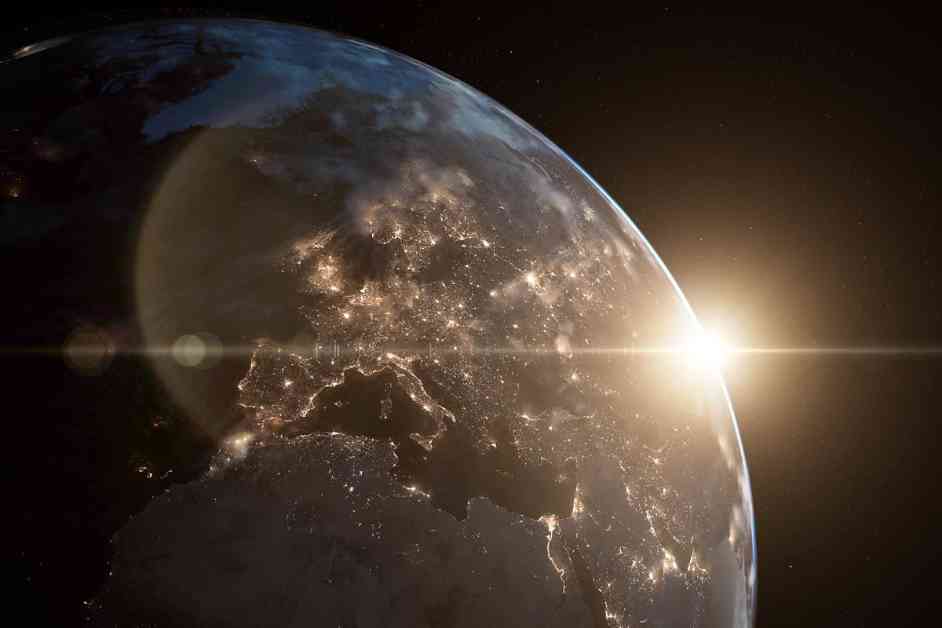In the dark depths of the Mediterranean Sea off the coast of Sicily, a remarkable event unfolded on February 13, 2023, that captured the attention of both marine life and scientists alike. A burst of azure light, invisible to human eyes, signaled the detection of a cosmic neutrino, a rare and elusive “ghost particle” with 30 times more energy than any neutrino previously observed. This groundbreaking discovery was made possible by the KM3NeT neutrino telescope, situated at the bottom of the Mediterranean near Sicily, Italy, and Provence, France.
Neutrinos, often referred to as “ghost particles,” are known for their ability to pass through vast amounts of matter without interacting. In fact, these tiny particles, emitted by sources like the sun, traverse the universe at a staggering rate, with trillions passing through our bodies every second. Despite their elusive nature, neutrinos serve as invaluable messengers of astrophysical phenomena occurring in the depths of space.
The KM3NeT collaboration, a team of European researchers, unveiled this extraordinary finding during a recent press conference, shedding light on the immense energy carried by the detected neutrino. Paschal Coyle, a neutrino physicist from the French National Center for Scientific Research, emphasized the significance of this discovery, stating that the neutrino was in an unexplored energy range, surpassing all previous observations by a considerable margin.
Unraveling the Mystery of Cosmic Neutrinos
KM3NeT, comprised of two detectors, is dedicated to unraveling the mysteries of neutrinos, with one detector focused on atmospheric neutrinos and the other, known as ARCA, designed to detect astrophysical neutrinos. Kate Scholberg, a physicist from Duke University, explained that when a high-energy neutrino interacts with water molecules, it creates a spectacular splash of particles, resulting in a cascade of Cherenkov radiation that can be observed by instruments like those in ARCA.
The recent detection by KM3NeT revealed a neutrino with an energy level of approximately 220 peta electron volts, far exceeding previous records. To provide context for this energy level, Aart Heijboer of the Nikhef National Institute for Subatomic Physics likened it to the force of a Ping-Pong ball dropping one meter in Earth’s gravity. Bryan Ramson, a neutrino physicist at the Fermi National Accelerator Laboratory, underscored the significance of this discovery by comparing it to the energy levels achieved by the most powerful particle accelerators on Earth.
The Quest for Answers and Further Discoveries
Despite the excitement surrounding this groundbreaking observation, scientists acknowledge that it raises more questions than it answers. The inability to pinpoint the exact source of the high-energy neutrino has left researchers puzzled, as conventional suspects like active galactic nuclei called blazars were not detected in the vicinity of the neutrino’s origin.
The discrepancy between KM3NeT’s findings and those of the IceCube neutrino telescope in Antarctica has also sparked intrigue among experts. Ignacio Taboada of the Georgia Institute of Technology, a member of the IceCube collaboration, expressed surprise at the unprecedented nature of the KM3NeT observation and emphasized the need for additional data to fully understand the implications of this discovery.
While the detection of the high-energy neutrino remains a tantalizing mystery, scientists are eager to delve deeper into the realm of astrophysical neutrinos and unlock the secrets they hold about the universe’s most elusive phenomena. As researchers continue to push the boundaries of neutrino science, the quest for knowledge and new discoveries remains as captivating as ever.










